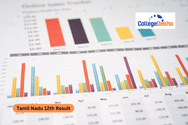Karnataka PUC Syllabus 2024-25 for all the subjects of Science, Commerce, and Arts stream is available here. Students can check the Karnataka 2nd PUC Syllabus in detail and make a study plan. Read the article in detail to know the topics included in different subjects.
- Karnataka PUC Syllabus 2024-25 Overview
- Latest Updates:
- Karnataka PUC Syllabus 2024-25 – PUC Board 1st & 2nd …
- Karnataka PUC Syllabus 2024-25 – Highlights
- Karnataka 2nd PUC Mathematics Syllabus 2024-25
- Karnataka 2nd PUC Biology Syllabus 2024-25
- Karnataka 2nd PUC Syllabus for Physics 2024-25
- Karnataka 2nd PUC Syllabus for Economics 2024-25
- Karnataka PUC Syllabus for Business Studies 2024-25
- Karnataka 2nd PUC Chemistry Syllabus 2024-25
- Karnataka 1st PUC Mathematics Syllabus 2024-25
- Karnataka Board 1st PUC Biology Syllabus 2024-25
- Karnataka Board 1st PUC Physics Syllabus 2024-25
- Karnataka 1st PUC Chemistry Syllabus 2024-25
- Karnataka 1st PUC Important Reference Books
- Karnataka PUC Syllabus 2024-25 - Points to Remember
- Importance of Karnataka PUC Subjects
- How to Download Karnataka PUC Syllabus 2024-25
- Karnataka 2nd PUC Board 2025 Preparation Tips
- Faqs


Never Miss an Exam Update
Karnataka PUC Syllabus 2024-25 Overview
Karnataka PUC Syllabus 2024-25: The Karnataka Department of Pre-University Education has released the Karnataka Board 1st and 2nd PUC Syllabus 2024-25 for students online. The students can go through the updated syllabus and check the names of topics included in each of the subjects. Students can divide the syllabus into smaller units and prepare for the board exams. The syllabus also includes marks distribution. Students can check the marks weightage and prepare the topics accordingly. To prepare well for the board exams, students can also go through the Karnataka Board Class 12 Exam Pattern 2024-25 , grading system, and marking scheme.
Once the Karnataka 2nd PUC syllabus is completed, students can solve the Karnataka 2nd PUC Question papers . This will help them to test their knowledge of the topics and prepare a strategy to score high marks in the Karnataka PUC exams. From the article below, students can check the syllabus for 1st PUC and 2nd PUC.
Latest Updates:
- Dec 03, 2024: The Department of Pre-University Education, Karnataka released the tentative Karnataka 2nd PUC time table 2024 on the official website- kseab.karnataka.gov.in. Karnataka 2nd PUC Exam 2024 will be held from March 1 to March 19, 2025.
Karnataka 2nd PUC Important Links |
|---|
Karnataka PUC Syllabus 2024-25 – PUC Board 1st & 2nd Curriculum
Every academic year, the Directorate of Government Education, KSEEB, organizes the Karnataka PUC exam for 1st and 2nd PUC students. Students who pass the Karnataka PUC test go to the next level.
Karnataka PUC Syllabus 2024-25 – Highlights
| Name of the Exam | Karnataka PUC Examination |
|---|---|
| Conducting Body | Karnataka State Board of PUC Education |
| Frequency of Examination | Once in an Academic year |
| Exam Mode | Offline |
| Duration of Exam | 3 Hours |
| Question Paper Marks | 100 marks (Theory marks + Internal Assessments) |
| Negative Marking | No Negative Marking |
| Official Website | pue.kar.nic.in |
Karnataka 2nd PUC Mathematics Syllabus 2024-25
| Units | Important Topics |
|---|---|
| Relations and Functions | Types of relations: universal and equivalence relations, transitive, empty, reflexive, etc. |
| Inverse Trigonometric Functions | Types of functions: the inverse of a function composite functions, One to one functions, Binary operations, etc. |
| Algebra | Matrices Concept, Types of matrices, Algebra of matrices, Symmetric and skew-symmetric matrices |
| Calculus | Continuity and Differentiability, Applications of Derivatives, Integrals, Applications of the Integrals, Differential Equations, etc. |
| Vectors and Three-dimensional Geometry | Direction cosines/ratios of vectors, types of vectors, parallel and collinear vectors, etc. |
| Linear Programming | L.P.P. introduction, mathematical formulation-mathematical formulation of L.P.P., and so on. |
| Probability | Conditional probability, Baye's theorem, Bernoulli trials and Binomial distribution, Bernoulli trial definition, and so on. |
Karnataka 2nd PUC Biology Syllabus 2024-25
| Chapters | Topics |
|---|---|
| The Living World |
|
| Biological Classification |
|
| Plant Kingdom |
|
| Animal Kingdom |
|
| Morphology of Flowering Plants |
|
| Anatomy of Flowering Plants |
|
| Structural Organisation in Animals |
|
| Cell-the unit of life |
|
| Biomolecules |
|
| Cell cycle and Cell Division |
|
| Transport in Plants |
|
| Mineral nutrition |
|
| Photosynthesis in Higher Plants |
|
Respiration in Plants |
|
| Plant Growth and Development |
|
| Digestion and Absorption |
|
| Breathing and Exchange of Gases |
|
| Body Fluids and Circulation |
|
| Excretory Products and Their Elimination |
|
| Locomotion and Movement |
|
| Neural Control and Coordination |
|
| Chemical Coordination and Integration |
|
Karnataka 2nd PUC Syllabus for Physics 2024-25
The physics syllabus provided comprises of 13 units with extremely thorough topics and sub-topics. Chapters such as Electric charges and fields, Current Electricity, Moving charges and magnetism, and so on are included in some of the units. Please review the Karnataka 2nd PUC Physics Syllabus 2024-25 and study accordingly.
| Unit Number and Name | Unit Name |
| 1. Electric charges and fields |
Electric Charge
Conductors and Insulators Charging by Induction Basic Properties of Electric Charge Coulomb’s Law Forces between Multiple Charges Electric Field Electric Field Lines Electric Flux Electric Dipole Dipole in a Uniform External Field Continuous Charge Distribution Field due to infinitely long straight uniformly charged wire. Field due to uniformly charged infinite plane sheet. |
| 2. Electrostatic Potential and Capacitance | Electrostatic Potential Potential due to a Point Charge Potential due to an Electric Dipole Potential due to a System of Charges Equipotential Surfaces Potential Energy of a System of Charges Potential Energy in an External Field Electrostatics of Conductors Capacitors and Capacitance The Parallel Plate Capacitor Effect of Dielectric on Capacitance Combination of Capacitors Energy Stored in a Capacitor |
| 3. Current Electricity |
Electric Current
|
| 4. Moving Charges and Magnetism | Magnetic Force Motion in a Magnetic Field Motion in Combined Electric and Magnetic Fields velocity selector Magnetic Field due to a Current Element, Biot-Savart Law Magnetic Field on the Axis of a Circular Current Loop Ampere’s Circuital Law The Solenoid and the Toroid Force between Two Parallel Currents Torque on Current Loop The Moving Coil Galvanometer |
| 5. Magnetism and Matter | The Bar Magnet The magnetic field lines Magnetism and Gauss’s Law The Earth’s Magnetism Magnetisation and magnetic intensity |
| 6. Electronic Induction |
The Experiments of Faraday and Henry
|
| 7. Alternating Current |
AC Voltage Applied to a Resistor
Representation of AC Current and Voltage by Rotating Vectors — Phasors AC Voltage Applied to an Inductor AC Voltage Applied to a Capacitor AC Voltage Applied to a Series LCR Circuit LC Oscillations Transformers |
| 8. Electromagnetic Waves |
Electromagnetic Waves
Electromagnetic Spectrum |
| 9. Ray Optics |
Refraction
Total Internal Reflection Refraction at Spherical Surfaces and by Lenses Refraction through a Prism Some Natural Phenomena due to Sunlight the rainbow Optical Instruments (except resolving power microscope and astronomical telescope) |
| 10. Wave Optics |
Huygens Principle
Refraction and Reflection of Plane Waves using Huygens Principle Coherent and Incoherent Addition of Waves |
| 11. Dual Nature of radiation and matter |
Electron Emission
Photoelectric Effect Experimental Study of Photoelectric Effect Photoelectric Effect and Wave Theory of Light Einstein’s Photoelectric Equation: Energy Quantum of Radiation Particle Nature of Light: The Photon Wave Nature of Matter |
| 12. Atoms |
Alpha particle Scattering and Rutherford’s Nuclear Model of Atom
Atomic Spectra Bohr Model of the Hydrogen Atom The Line Spectra of the Hydrogen Atom De Broglie’s Explanation of Bohr’s Secon d Postulate of Quantisation |
| 12. Nuclei | Atomic Masses and Composition of Nucleus Size of the Nucleus Mass Energy and Nuclear Binding Energy (except binding energy per nucleon and its variation with the mass number) Nuclear Force Nuclear Energy |
| 13. Semiconductor Electronics: Materials, Devices and Simple Circuits |
Classification of Metals, Conductors and Semiconductors
Intrinsic Semiconductor Extrinsic Semiconductor |
Karnataka 2nd PUC Syllabus for Economics 2024-25
| Chapters | Topics |
|---|---|
| Introductory Microeconomics |
|
| Preliminary Notations and Assumptions |
|
| Production and Costs |
|
| The Theory of the Firm under Perfect Competition |
|
| Market Equilibrium |
|
| Macroeconomics |
|
| National Income Accounting |
|
| Money and Banking |
|
| Income Determination |
|
| Government Budget and the Economy |
|
| Open-Economy Macroeconomics |
|
Karnataka PUC Syllabus for Business Studies 2024-25
Business studies consist of parts 1 and part 2. Please read both parts and become well-versed in the issues. Principles of Management, Business Environment, Organizing, Controlling, Staffing, Financial Management, and other major topics are covered in the PUC board Karnataka syllabus for business studies.| Unit | Unit Name |
Part I | |
| 1 | Nature and Significance of Management |
| 2 | Principles of Management |
| 3 | Business Environment |
| 4 | Planning |
| 5 | Organising |
| 6 | Staffing |
| 7 | Directing |
| 8 | Controlling |
Part II | |
| 9 | Financial Management |
Karnataka 2nd PUC Chemistry Syllabus 2024-25
The table below shows the Karnataka 2nd PUC Chemistry syllabus 2025 . They can check the names of the units included in the syllabus and decide the time required for preparing each of the units.
Name of Units |
|---|
Solutions |
Electrochemistry |
Chemical Kinetics |
The d & f Block Elements |
Coordination Compounds |
Haloalkanes and Haloarenes |
Alcohols, Phenols, and Ethers |
Aldehydes, Ketones, and Carboxylic Acids |
Amines |
Biomolecules |
Karnataka 1st PUC Mathematics Syllabus 2024-25
KSEEB 1st PUC Mathematics syllabus includes 16 chapters. From the table below, students can check the names of the chapters.
Sr. No. | Chapters |
|---|---|
1. | Sets |
2. | Relations and functions |
3. | Trigonometric functions |
4. | Principal of mathematical induction |
5. | Complex numbers and quadratic equations |
6. | Linear inequalities |
7. | Permutation and combination |
8. | Binomial theorem |
9. | Sequence and series |
10. | Straight lines |
11. | Conic sections |
12. | Introduction to three dimensional geometry |
13. | Limits and derivatives |
14. | Mathematica reasoning |
15. | Statistics |
16. | Probability |
Karnataka Board 1st PUC Biology Syllabus 2024-25
The following table includes the names of all chapters included in the Karnataka 1st PUC Biology Syllabus 2025. Ensure that all chapters are covered before the exam.
Sr. no. | Chapters |
|---|---|
1. | Living world |
2. | Biological classification |
3. | Plant kingdom |
4. | Animal kingdom |
5. | Morphology of flowering plants |
6. | Anatomy of flowering plants |
7. | Structural organisation of animals |
8. | Cell the unit of life |
9. | Biomolecules |
10. | Cell cycle and cell division |
11. | Transport in plants |
12. | Mineral nutrition |
13. | Photosynthesis in higher plants |
14. | Respiration in plants |
15. | Plant growth and development |
16. | Digestion and absorption |
17. | Breathing and exchange of gases |
18. | Body fluids and circulation |
19. | Excretory products and elimination |
20. | Locomotion and movement |
21. | Neural control and coordination |
22. | Chemical coordination and integration |
Karnataka Board 1st PUC Physics Syllabus 2024-25
Students should focus on each of the topics included in the Physics syllabus. The chapters included in the Karnataka board 1st PUC Physics syllabus are as follows.
Sr. No. | Chapters |
|---|---|
1. | Physical-world |
2. | Units and Measurements |
3. | Motion in a Straight Line |
4. | Motion in a Plane |
5. | Laws of Motion |
6. | Work, Power, Energy |
7. | System of Particles and Rotational Motion |
8. | Gravitation |
9. | Mechanical Properties of Solids |
10. | Mechanical Properties of Fluids |
11. | Thermal Properties of Matter |
12. | Thermodynamics |
13. | Kinetic Theory |
14. | Oscillations |
15. | Waves |
Karnataka 1st PUC Chemistry Syllabus 2024-25
From the table below, students can check out the Chemistry syllabus. They can go through the topics included in the Chemistry syllabus.
Sr. No. | Chapters |
|---|---|
1. | Some basic concepts of chemistry |
2. | Structure of Atom |
3. | Classification of Elements and Periodicity in Properties |
4. | Chemical Bonding and Molecular Structure |
5. | States of Matter: Gases and Liquids |
6. | Thermodynamics |
7. | Equilibrium |
8. | Redox Reaction |
9. | Hydrogen |
10. | s-Block Elements |
11. | Some p-Block Elements |
12. | Organic Chemistry - Some Basic Principles and Techniques |
13. | Hydrocarbons |
14. | Environmental Chemistry |
Karnataka 1st PUC Important Reference Books
Students can check the table below to know the names of important books for different subjects. For more information related to the topics, students can refer to these books.
Name of the Subject | Books Recommended |
|---|---|
Chemistry |
|
Physics |
|
Biology |
|
Math |
|
Accountancy |
|
Business Studies |
|
Karnataka PUC Syllabus 2024-25 - Points to Remember
Students must understand the exam pattern in order to effectively prepare for the exam. The Karnataka 2nd PUC syllabus 2024-25 will familiarise students with the marking scheme, the amount of questions, and the duration of the test, among other things.
The following is the exam pattern for Karnataka 2nd PUC 2025:
- Kannada, Tamil, Malayalam, Marathi, Telugu, English, Sanskrit, and Urdu mediums will be used in the Karnataka PUC 2024-25 examination.
- Two of the six subjects are languages, while the remaining four can be chosen from the list below: Biology, Business Studies, Chemistry, Computer Science, Economics, Electronics, English, French, Geography, Geology, Hindi, Hindustani Music, History, Home Science, Kannada, Karnataka Music, Logic, Malayalam, Marathi, Opt-Kannada, Physics, Politics, Psychology, Sociology, Statistics, Telugu, Tamil, Urdu, and others.
- The minimum passing marks for each paper are 35%, according to the Karnataka PUC curriculum 2024-25.
Importance of Karnataka PUC Subjects
According to the Educational Conduct Board's guidelines, the Karnataka PUC Curriculum includes various disciplines; here we describe the significance of some of the important subjects.
- Mathematics' Importance - Mathematics is an important subject, especially for PUC students; it is a required subject for a better grade or overall score.
- Social Studies' Importance - Another important subject in which a student can easily achieve excellent grades by working on geography and history papers is Social Studies.
- Science's Importance - Because Science includes both physical and biological science articles, achieving the highest score or receiving the best grades is simple.
- Languages' Importance - The languages in which one can score the highest are Telugu, Hindi, and English. While Telugu and English both have two papers (theory and vocabulary), students in both languages have a lot of opportunities to improve their communication skills.
- Other Academic Subjects - Carnatic music, Hindustani music, painting, and Art Education are some of the additional courses in the Karnataka SSLC Academic Syllabus that students can take to strengthen their creative and soft skills. In comparison, several basic disciplines help students strengthen their technical skills.
How to Download Karnataka PUC Syllabus 2024-25
The Karnataka 11th & 12th Class Syllabus 2024-25 PDF may be downloaded from the direct link provided. Learn more about Karnataka 2nd PUC Result 2025 . The whole syllabus for each subject is presented in the accompanying table for the benefit of exam applicants. Candidates can either download them from this page or click on the link above.
- Step 1: Go to the KSEEB PUC board's official website, pue.kar.nic.in.
- Step 2: Go to the "Notification" section of the homepage and click on the "Karnataka PUC Syllabus 2024-25" link.
- Step 3: A syllabus PDF appears in a new window.
- Step 4: Save the PDF file for future reference.
Karnataka 2nd PUC Board 2025 Preparation Tips
To perform well in Karnataka PUC exams 2025, students need to focus on the syllabus and solve questions from sample papers and previous year question papers. This will help students to analyze their level of preparation. To score high marks, students can follow the effective preparation tips given below:
- Create a Study Schedule : According to the stream, students should equally focus on each of the subjects. They should divide the study hours between all subjects. According to the difficulty level of the subjects, they can fix the study hours and pay more attention to the difficult subjects. Students can set daily targets for each of the subjects. In this manner, they will be able to complete the syllabus in time.
- Complete the Syllabus in Advance: Going through the Karnataka 2nd PUC 2025 syllabus is the first step for students going to appear for the exams. Students need to complete the entire syllabus of each subject in detail. Students can also check the marks of all topics and prepare the subject accordingly. After completing the syllabus, students can prepare a strategy to structure the answers.
- Quality over Quantity: While studying daily, students can set small targets that can be easily achieved. They should focus on quality studying instead of going through the numbers. The students should ensure that they are able to answer the questions for the topics covered in a day.
- Solve Sample Papers and Previous Year Question Papers: Students should regularly solve the Karnataka PUC Model Papers 2025 and previous year question papers to check the level of understanding for diverse topics. If they are able to answer all questions, they are ready for the board exams. If they face difficulty in some questions, they need to focus on the particular topics. This will help them to evaluate themselves and understand their strengths and weaknesses.
- Enhance Speed and Accuracy: Students need to focus on speed and accuracy while attempting the question paper. It is essential for them to correctly answer all questions within the given time. They can increase their speed and accuracy by regularly attempting the question papers.
FAQs
The second PUC syllabus for Karnataka is available online at pue.kar.nic.in.
Of the six subjects, two are languages, and the remaining four can be chosen from the list below. English, French, Geography, Geology, Hindi, Hindustani Music, History, Home Science, Kannada, Karnataka Music, Logic, Malayalam, Marathi, Opt-Kannada, Physics, Political Science, Psychology, Sociology, Statistics, Telugu, Tamil, Urdu, etc. are only a few of the subjects included in this list.
To pass the Karnataka second PUC exams, students must receive at least 35% of the possible points in each subject.
Karnataka PUC 2nd Result will be released in May 2025.
To pass the exam, students must get a minimum of 35 percent in each subject.
All Karnataka 1st and 2nd PUC exams include short and long questions. The questions are asked for different marks and can be easy to difficult.
The 1st and 2nd PUC Examinations, which are the 11th and 12th class Examinations of the Karnataka State Board, are referred to as Karnataka PUC Exams.
Was this article helpful?

















